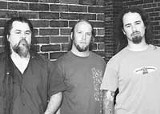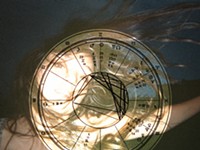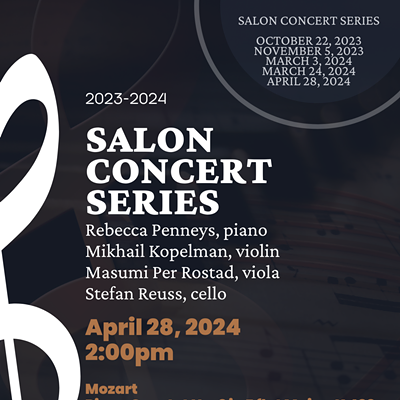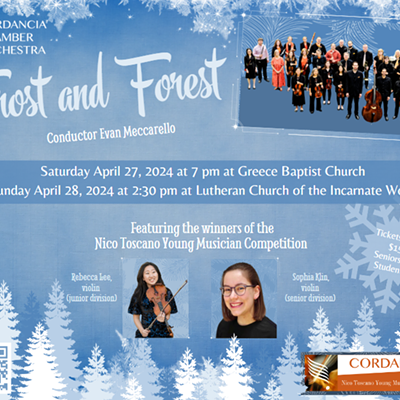[
{
"name": "500x250 Ad",
"insertPoint": "5",
"component": "15667920",
"parentWrapperClass": "",
"requiredCountToDisplay": "1"
}
]
Flash back to last year's Bug Jar festival: It's a picture-perfect summer day on the lawn near the Highland Park bowl. Between acts, audience members toss Frisbees, hacky sack, drink beer, and mingle. As local trio Sulaco sets up, guitarist-vocalist Erik Burke, sounding barely awake, says: "We are the heavy metal portion of this event. Hopefully, we won't scare the hell out of too many of you."
Suddenly, a harsh, hyperkinetic flurry of sound erupts from the stage. Burke's voice becomes an agonized, demonic howl, and the frantic, menacing roar behind him threatens to consume the entire scene. Strangely enough, hardly anybody even flinches, and two people in particular seem to dig the music. First, a middle-aged man in jogging shorts, suntan lotion, and not much else stands before the stage and performs dance moves that fall somewhere between aerobics and Qui Gong. All four of his limbs move in time with Sulaco's mind-numbingly complex rhythms.
The second is --- no lie --- a toddler. With gleeful abandon, she waves her arms in the air and makes monstrous faces at the people around her. Watching the band rock so furiously in the distance while this child keeps pace feels completely unreal.
Children's music notwithstanding, Sulaco (the name of the spaceship in Aliens, by the way) is a local ambassador of the international underground vanguard that's pushing metal in all new directions --- our very own glimpse into metal's future. This won't surprise anyone familiar with the band's collective resume, which includes time served in Within, Mungbeandemon, Kalibas, and, of course, local tech-metal legends Lethargy (which also included Brann Dailor and Bill Kelliher, both now members of critically-acclaimed Atlanta thrash-prog hybrid Mastodon, which plays Water Street August 4).
Contemplating the meaning of heaviness over a few rounds at Monty's Krown, though, the band members downplay their role in the music's evolution. Bassist Lon Hackett, drummer Chris Golding, and Burke have always kept their ears to the ground for obscure bands, many of whom they hold in high esteem for making important contributions of their own. Hackett even half-jokes that all potential innovation in metal has already happened, and the whole band is reluctant to forecast where the music might be headed next.
As for their own stuff, they're excited because the possibilities seem wide open.
"There will probably be a little bit of everything," Burke predicts. "We're still kind of molding [our sound]."
Maybe so, but in concert Sulaco is unfalteringly tight. Remembering these songs, even as a listener, takes intense effort. Playing them requires staggering technical skill.
For the uninitiated, it's difficult to pick a point along metal's timeline that puts Sulaco's work in perspective. But here's an oversimplification: Almost as soon as bands like Metallica and Slayer created thrash metal by upping the ante on Motörhead's already fast tempos, a new crop of artists, e.g. Death and Obituary, set out to outdo thrash in both speed and heaviness and death metal was, ahem, born. Around 1988, death metal, in turn, begat what is called grindcore, whose pioneers, Napalm Death and Carcass, played superhumanly fast bursts of near-indecipherable noise that rushed by the ear like a blur of static. With each of these developments, it seemed like music couldn't possibly get any heavier or faster.
Since then, of course, it has. Several times. Like the explorer Magellan, who was hell-bent on finding the end of the world (even if it meant falling off) metal bands have been in a perpetual race to the end of the spectrum only to plunge from there headfirst into the unknown. By the time avant-garde composer John Zorn declared that grindcore reminded him of '60s free jazz, avant-garde sensibilities had crept into the music. Sulaco and their "extreme metal" peers --- the Dillinger Escape Plan, Burnt By The Sun, Today Is The Day, Meshuggah, Candiria, etc. --- are nothing if not experimental.
Sulaco's music plays like audio invisible ink --- by the time your mind has grasped one idea, it's too late because the band is already somewhere else, and the listener constantly loses a sense of footing. Sulaco makes disorientation palatable, though, thanks in no small part to Golding, who matches extreme speed with extreme finesse and profound compositional sense, deftly smoothing out the angular rhythmic edges and giving the music true flow. (For my money, his playing already rivals the greats of the genre.)
"You can't just be a line of riffs," says Hackett. "You can do that, but you need something to come back to that forms a hook in your head."
Eastman professor Ciro Scotto traces Sulaco's "highly segmented" approach to Stravinsky. Metalheads, he offers, even if unaware of modern classical, may unconsciously receive inspiration from film soundtracks.
When it's suggested to them that Sulaco might appeal to non-metalheads (specifically classical musicians), Burke, Golding, and Hackett pause and mull it over. They seem to think this is possible, "If," muses Hackett, "they're open-minded enough to look past the distortion and the vocals."
"Yeah," Burke answers, laughing, "the vocals make most people cringe right away."
Sulaco plays on Thursday, July 29, with Ken Mode and American Heritage at Monty's Krown, 875 Monroe Avenue, at 8 p.m. $6. 271-7050.
Speaking of Sulaco
-

HomeStage: Sulaco
May 15, 2020 -

The F Word: Now I Wanna Be Your Cat
Oct 24, 2018 - More »
Latest in Music Features
More by Saby Reyes-Kulkarni
-
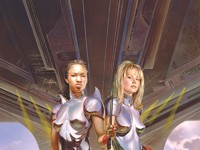
Inside Astronomicon
Nov 8, 2006 -

Kissing Etta James
Jun 21, 2006 -

James Brown nearly took off my head
Jun 14, 2006 - More »
